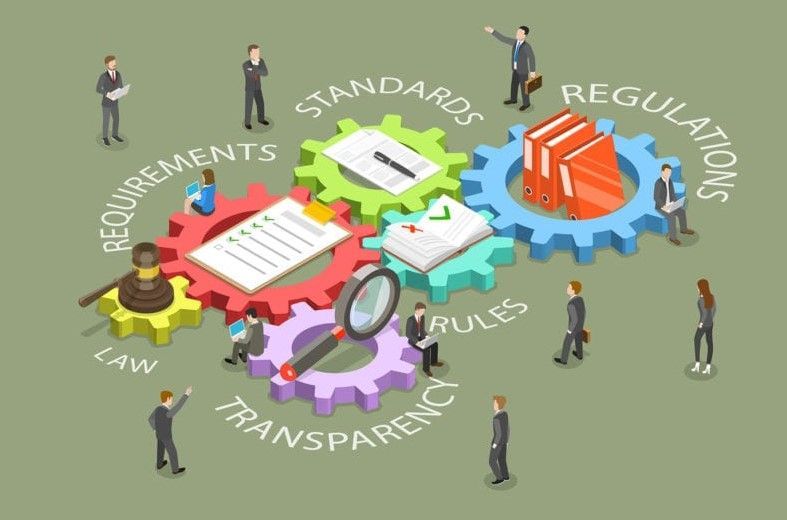Starving for Good News? Enjoy this Sampler!
June 17, 2025
| Business is more of a struggle today than ever,
but there is also more reason for hope. You just have to look for it. We’ve always had a glass half-full mentality, maybe even three quarters. That’s not surprising, of course: We teach consultative sales training and customized process development. Down-in-the-mouth just doesn’t work in selling. But how can anyone maintain such a positive attitude in such challenging times? One way is to look for good news . We do, and you can, too. You might be surprised by what you find. And don’t worry about overdoing the power of positive thinking. Just being in business protects you from becoming a Pollyanna. What are some good places to look for good news? Try Your Customers Talking to your customers is good business in any environment. Most companies we know don’t do it often enough even in good times. Now, the tendency is to do it even less because you don’t want to “bother” people. Make a big effort to change that thinking. We’ve found that customers, clients, and prospects welcome phone calls these days and seem even more inclined to take them. Key Point : Use commonsense. This isn’t the time to make a hard sell. In fact, we don’t think there’s ever a time to use that tactic, mainly because it doesn’t work very well, even with consumers. In consultative, business-to-business selling, it never does. What Are Our Customers Experiencing? One client produces check-scanning equipment, a business that commonsense would say should be declining along with the use of checks. But that’s not what’s happening right now. Our client is predicting a year-over-year increase in sales because of the pandemic. For customer convenience and safety, banks are looking to supply more scanners to businesses that, for the time being, really don’t want to make “bank runs.” Another client sells money-saving services to municipal wastewater treatment plants. While finding that many cities and towns are, quite naturally, putting current projects on hold, others are helping to fill the top of this client’s sales pipeline. They are making plans to move forward when tax revenues, and unexpected Covid-19 expenses, are nailed down. A third client, who develops residential real estate projects, saw a 25 percent oversubscription of investors to his most recent offering. This client builds residential communities in carefully chosen locations around the country. He helps his cause by doing the legwork necessary to understanding his customer base from top to bottom. (Residential real estate construction, by the way, is expected to be a growth sector. That’s good news in itself!) Technology’s Impact on Productivity and Cost Reduction Yes, the promise of technology is always a valid card to play in tough times—and it’s a promise that’s often been kept. Not surprisingly, technology continues to develop significant productivity improvements. While 5G is in the consumer spotlight, for example, “edge computing” is not so well known. Yet it’s expected to have great impact on business efficiency, ultimately wringing tremendous costs out of the economy. Edge computing is estimated to have as large or larger impact on the economy as networking and cloud computing did in past times. Edge computing saves time and band width by bringing computing and data storage much closer to the point of use. It’s a “distributed computing” model that locates its components on different networked devices. They communicate by sharing information with each other faster and better. Large gaming systems are an illustration, and manufacturing should see significant benefits. Consumer Confidence and Employment It’s true that, like the stock market, consumer confidence can be an emotional and financial roller coaster. But, at least for now, consumer confidence in the future of the economy has been fairly stable. Industries expecting to grow—grocery stores, technology, health care, manufacturing—employ about three times the number of workers (39 million) than industries expected to contract (13 million), such as classic retailers, restaurants and accommodations, and recreation. Whether the increase in jobs in the growth sectors will be enough to offset the decline in the contracting sectors is another question. Regardless, consumer confidence in the future is fundamentally positive news. And the stock market? Well, it’s always bounced back over the long term, so keep that in mind, and some analysts expect more upward consistency in the next six to 12 months. Even so, this year has already caused some queasiness. The market plummeted to the lowest of lows (worst first quarter ever) and soared to the highest of highs: April was the market’s best month since 1987. The Power of People And one more thing: We like the virtual message Retired Admiral William McRaven recently brought to the Aspen Ideas Festival about the much-maligned millennial generation: “I’m the biggest fan of the millennials you’ll ever meet.” The millennial generation is defined as people born between 1981 and 1996. Admiral McRaven oversaw the bin Laden raid and delivered the now well-known “make your bed” commencement address. When he hears millennials characterized as “entitled” or “snowflakes,” he told the festival participants, “I’m always quick to point out then you’ve never seen them in a firefight in Afghanistan, or you’ve never seen them try to make a better life for themselves going to one of our great schools in the state of Texas.” McRaven is also a former chancellor of the University of Texas. And whenever he gets “a little bit concerned about the direction of our country,” he reflects on his experiences with young people and “know[s] that we’re going to be OK.” That glass is clearly more than half-full. Please let us know about the good things that are happening to you, your customers, and your company. How are you staying positive? How are you motivating your employees to do the same? We’re always available at 847-446-0008 and pkrone@productivestrategies.com. |
The post Starving for Good News? Enjoy this Sampler! appeared first on Productive Strategies, Inc..










